Take this 13 days China high-speed train tour and witness the “China speed”. It can run at a speed of more than 200 kilometers per hour, which means crossing a soccer field in a blink of an eye. You will have a first experience of the high-speed train from Beijing, the capital of China, to Xi’an. Then you will take a fast train from Xi’an to Lhasa, and enjoy the change of scenery from the plains to the high land. It will be too long a train journey from Lhasa to Chengdu so you will take a flight for this part. Chengdu is known as the land of abundance, and most importantly, the home to Giant Pandas. Finally, you will take a high-speed train from Chengdu to Shanghai, the international metropolis. You will witness how China has developed in the past few years in Shanghai. Stop hesitating and join us on this Mysterious China High-Speed Train Tour with Tibet!

After arrival, you will meet your guide at the airport, who will be holding your name sign. Then you will be transferred to the hotel, and on the way to the hotel, your guide will briefly introduce Beijing to you. Beijing is the capital of China, and there are numerous historic and cultural sites waiting for you to explore. You can ask your guide whatever you want to know about this city. After arriving at the hotel, you will have a nice rest and make some preparations for the following journey.
Free Time Suggestion: If you are still full of energy after a long flight, you can go to Houhai Lake area. It is a popular place for residents living nearby to take a walk after dinner, and also a chic place for young people to enjoy their time after work. Walking along the lake, you can listen to the music coming from the nearby bars, as well as appreciate the beautiful scenery of glistening water and green willows. What’s more, this place is filled with local snacks. If you want to eat specialties, you can go there to have a try.
After breakfast, your guide will take you to Tian’anmen Square. It is located in the center of Beijing and can accommodate about 1 million people for grand gatherings. Standing in the square, you may first notice the imposing Tian’anmen Gate Tower. The Tian’anmen Gate Tower served as the main entrance to the imperial palace during the Ming and Qing dynasties (1368-1912). The gate tower is featured by red walls, yellow glazed tiles, and colored paintings. It is built of huge bricks and is pierced with five arched doors, with the middle one being the largest. It is said that the middle door was only open to the emperors in the past.
Next, you will go to the Forbidden City (closed every Monday). The Forbidden City was the palace where the royal families of the Ming and Qing dynasties lived. Now, it is open to the public as a comprehensive museum. It has a collection of more than 1 million cultural relics, including paintings, porcelains, and bronze wares. One of the famous paintings collected here is the Luoshen Appraisal Painting drawn by an ancient Chinese painter Gu Kaizhi. It vividly depicts the sad love story of Cao Zhi and Luoshen (the Goddess of the Luo River). They met at the Luo River and fell in love with each other, but they had to separate due to the boundaries between man and the immortal.
After lunch, you will visit the Temple of Heaven. It was the place where emperors of the Ming and Qing dynasties worshiped heaven and prayed for harvests. Now, it acts as a park for sightseeing. There are many grand ancient buildings in the park, among which the Hall of Prayer for Good Harvest has the longest history. The hall has a cone-shaped structure with triple eaves. There are a total of 28 huge poles supporting the hall, which are arranged according to special rules. The inner 4 poles symbolize four seasons, the intermediate 12 poles represent twelve months of a year, and the outer 12 poles stand for 12 two-hour periods (a traditional way of measuring time in ancient China) of the day.
Then you will be shown around the Summer Palace, which is an imperial garden built in the Qing Dynasty (1636-1912). It combines the natural landscape of hills and water with artificial features such as halls, pavilions, and bridges. The Long Corridor is one of the highlights of the garden, which is the longest corridor in the Chinese gardens with a length of 728 meters. Numerous square plaques are hung between columns in the corridor. Those plaques are decorated with more than 14,000 colored paintings, involving figures, mountains, flowers, birds, etc. Walking along the corridor, you can fully appreciate the ancient Chinese paintings.
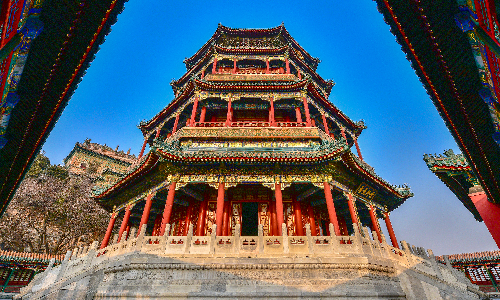
After breakfast, your guide will drive you to the Ding Tomb of the Ming Tombs, which is located northwest of Beijing. It will be a 1.5-hour drive (about 45 kilometers) from the downtown area. There are 13 tombs of the royal families of the Ming Dynasty in total, but only four tombs are open to the public. Among them, the Ding Tomb is the first to be excavated. The main building of the tomb is the underground palace which houses the coffins of the thirteenth emperor of the Ming Dynasty and his empress as well as a variety of burial objects such as jade, porcelain, and silk fabric.
After lunch, you will visit the Mutianyu Great Wall. It is the longest section of the Great Wall, with a total length of 5,400 meters. Since it is relatively far from the urban area, there is a fewer number of people going there. Therefore, you can get a better travel experience. It lies on the winding mountain range which is covered with various plants. The wall is well-preserved, and dozens of watchtowers are scattered along the wall. It is pretty strenuous to climb the wall by yourself, so you can take the cable car up and down the wall. Sitting in the cable car, you can overlook the great scenery of the wall.
On the way back to the hotel, you will pass by the Bird’s Nest and Water Cube, which were built for Beijing 2008 Olympic Games and still serve as professional gymnasiums. They are landmarks of Beijing with unique designs. Due to time constraints, we will not visit them, but you can take some pictures from afar.


 Xi’an
Xi’an After breakfast, your guide will show you around the hutongs, which are narrow alleys between rows of siheyuan (a kind of traditional courtyard residence in Beijing). Almost every hutong has its name and feature, and you will take a rickshaw (a small vehicle with three wheels that is driven by man) to explore them. Along the alleys, you can see shops, bars, and cafes with different styles. In addition to the hutong rickshaw tour, you will visit a local family. The host will give you a warm reception, and you can have a deeper insight of what the traditional Beijing residence is like.
After lunch, you will say goodbye to Beijing and head to Xi’an. You will be transferred to the railway station and take the estimated high-speed train G87 14:00/18:19. Xi’an is a famous historical city with profound history and culture. There are about 13 dynasties that once established capitals here. After arrival in Xi’an, your guide will pick you up at the railway station and then transfer you to the hotel. On the way to the hotel, your guide will tell you something useful and interesting about this city.

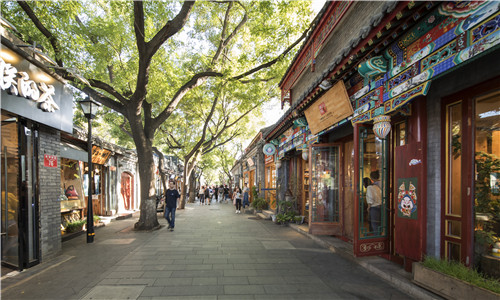
After breakfast, we will drive for about 1 hour (40 kilometers) to the northeast to visit the Terracotta Warriors and Horses Museum. The museum was built in 1975 based on the pits of terracotta warriors and horses, which are the burial objects of Emperor Qin Shihuang, the first emperor of the Qin Dynasty (221 BC-207 BC). There are three pits and an exhibition hall of cultural relics open to the public. The three pits house nearly 8,000 terracotta warriors and horses that are similar in size to real people and horses as well as many bronze weapons. Those warriors can be divided into different military branches such as infantry, cavalry, and chariot warriors, which are arranged in order. They have different expressions and postures, which make them look very vivid.
After lunch, your guide will take you to the Big Wild Goose Pagoda. The pagoda was built under the lead of Xuanzang (a Chinese Buddhist monk) in 652 during the Tang Dynasty (618-907) to preserve the Buddhist scriptures and statues brought back by him from Tianzhu (ancient India). It has seven floors and each floor houses different cultural relics such as the statue of Shakyamuni, and Buddha's relics. On the seventh floor of the pagoda, there is a caisson ceiling carved with a lotus pattern, and each petal of the lotus is engraved with a Chinese character, 14 in total. Those characters can form different verses based on different ways of interpreting.
Next, you will go to the Great Mosque. It is one of the four major mosques in China and the largest mosque in Xi 'an. It is also the main place where Muslims in Xi 'an organize and participate in religious activities. The mosque can be divided into 4 courtyards with classical gardens, halls, pavilions, and arches. In the fourth courtyard, the main prayer hall can accommodate about 1,000 people. It is surrounded by walls decorated with colored paintings. The prayer services are held 5 times daily in the hall according to the traditional custom of Muslims.
The last stop you will visit in Xi’an is the Muslim Street. It is a famous food street in Xi’an with obvious Islamic features. There are a variety of shops, restaurants, and stalls owned by the Hui people in the street. It is not only a tourist attraction but also a popular place for local people because almost all the delicious snacks and specialties of Xi’an can be found there. You can see Rougamo (marinated meat in a baked bun), Pita Bread Soaked in Lamb Soup, Cold Rice Noodles, etc. Besides, there are some shops selling folk costumes and handicrafts, so you can have a look if you are interested in them.
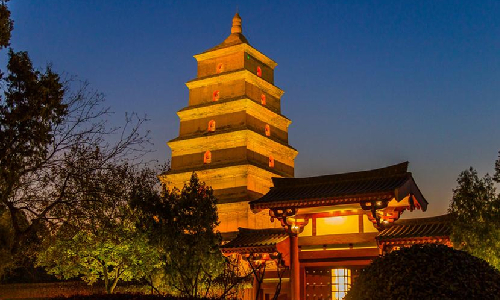
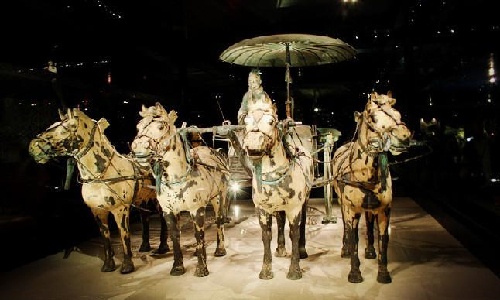
 Lhasa
Lhasa After breakfast, you will leave Xi’an and take the estimated train Z265 9:54/15:45+1 to Lhasa, the City of Sunshine in Tibet. Since Lhasa is about 2,700 kilometers away from Xi’an, it will be a long trip on the train, but you can fully appreciate the scenery on the way. The scenery outside the window will gradually change from winding mountains to vast plateaus. You will pass by many magnificent places of interest and see broad grasslands, snow mountains, great rivers, clean lakes, and herds of sheep and cows. This journey will be a feast for the eyes!
Today you will arrive in Lhasa at 15:45 and your guide will be waiting for you at the railway station. You will be transferred to the hotel, and you can ask your guide whatever you are interested in. Your guide will patiently answer you and tell you some useful information about this city. After checking in at the hotel, you can have a nice rest and try to adapt to the high altitude. Here are some tips for you.
Tips:
1. Please do not take a bath on the first day of arrival since you may catch a cold and that can be severe on the highland.
2. Avoid doing strenuous exercise which may cause altitude sickness.
3. Drink some local buttered tea which may help you adapt to the altitude faster.
4. Get enough sleep and keep warm.
5. Bring some necessary medicines and sun-proof articles.
After breakfast, you will visit the Potala Palace. It was built by King Songtsen Gampo of the Tubo Kingdom for Princess Wencheng of the Tang Dynasty. It consists of White and Red Palaces and their ancillary buildings, which are decorated with splendid wall paintings. The Potala Palace is known as a sacred place for Buddhists. There is a love story that happened here. It is said that a man loved a woman deeply but the woman didn’t like him. Someone told the man that only after he became a monk in the Potala Palace could he get the love from the woman. The man didn’t believe it but still tried his best to pursue the woman. Sadly, the woman was still not moved by him. The man was so heartbroken that he became a monk in the Potala Palace. However, the woman found that she already fell in love with the man. She came to the Potala Palace and kowtowed in front of it to pray that the man can get back to her. The man saw this scene and felt touched, so he resumed secular life to marry the woman.
After lunch, your guide will take you to the Jokhang Temple. It is a Tibetan Buddhist temple with a history of more than 1,300 years. It combines the architectural styles of Tibet, Nepal, as well as India, and becomes a representative of Tibetan religious building. It attracts numerous worshippers who piously kowtow and leave deep marks on the floor over the years. The temple enshrines several statues of Buddha, and the lifesize 12-year-old Shakyamuni statue brought by Princess Wencheng is the most precious. Besides, there are about 4, 000 square meters of Tibetan murals depicting Buddhist stories, historical events, and construction of the temple.
Next, you will go to Barkhor Street, which is a prosperous commercial street built around the Jokhang Temple. The street retains its original style and is paved with hand-polished stones. There is a giant incense burner in the center of the street, which is filled with incense burning day and night. Along the street, you will find many shops that sell religious articles (prayer wheels, scriptures, etc.), Tibetan handicrafts, and other specialties. Also, there are many historical sites in the street. Among them, the Path of Prayer Wheels is the most special. Every day, there will be believers piously turning the prayer wheels along the path.

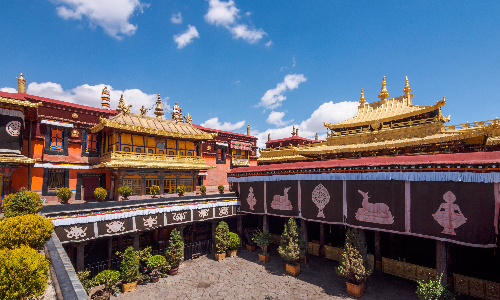
 Chengdu
Chengdu Your journey in Lhasa comes to the end. After breakfast, you will be transferred to the airport and take the estimated flight MU5826 12:50/14:55 to Chengdu. Chengdu is honored as the “Land of Abundance” and occupies a spot in the list of China's best tourist cities. After arrival in Chengdu, your guide will pick you up at the airport and then drive you to the hotel.
Free Time Suggestion: If you are willing to stroll around in the city, you can go to the Kuanzhai Alley. It is composed of three ancient alleys: Wide Alley, Narrow Alley, and Well Alley, which were built in the Qing Dynasty. Here you can enjoy delicious snacks, appreciate exquisite handicrafts, and experience the local culture of Chengdu.
After breakfast, you will visit the Chengdu Research Base of Giant Panda Breeding. It is a conservation base of giant pandas, red pandas, and other endangered wild animals. It tries to imitate the natural living environment and has built many buildings and areas for giant pandas, such as the delivery room, activity area, and feeding area. The giant pandas usually clumsily climb the trees, sit on their rocking chairs, and play with each other. When seeing their clumsy but lovely movements, you can’t help smiling. Sometimes, the keepers will put all giant panda babies who are several months old together to enjoy the sunshine, and then you will see dozens of black-and-white fluffy cubs sit or lie on the ground. What a cute scene!
After lunch, your guide will take you to Jinli Street. It is a famous commercial street in Chengdu, which is composed of antique buildings with styles of the late Qing Dynasty. It is featured by crisscrossed alleys, lotus ponds, and stone bridges. It mainly reflects the history of the Three Kingdoms (220-280) and the traditional folk culture of Sichuan Province. There are a variety of specialty shops, restaurants, and theaters in the street. Therefore, you can not only enjoy local delicious food such as Bobo Chicken, sweet water noodles, and stinky tofu but also buy some souvenirs with local features for your family and friends.
Next, you will go to Chengdu Wuhou Shrine Museum. It was built to commemorate Liu Bei (the king of Shu Kingdom), his counselor Zhuge Liang, and other heroes of the Kingdom of Shu (221-263). In the Three Kingdoms Cultural Relics Preservation Zone, there are grand halls that enshrine the statues of Liu Bei and Zhuge Liang. In front of the Hall of Liu Bei, there is a corridor that houses 28 statues of civil officials and generals who contributed to the founding of the Kingdom of Shu. You can also see steles that depict their life stories.
The last stop in Chengdu is People’s Park, which is a comprehensive park with integrated functions of cultural relics protection and recreational activity. It boasts many famous tourist attractions such as the Gold Water Stream, the Goldfish Island, and the Potted Landscape Garden. There are more than 200 potted plants on display in the Potted Landscape Garden, including over 20 pots of landscape bonsai and 180 pots of plant bonsai. In addition, you can drink tea in the teahouse by the lake and see colorful goldfish swimming around. If you are lucky, you may have the chance to watch the folk performance on the square or appreciate the chrysanthemum exhibition.

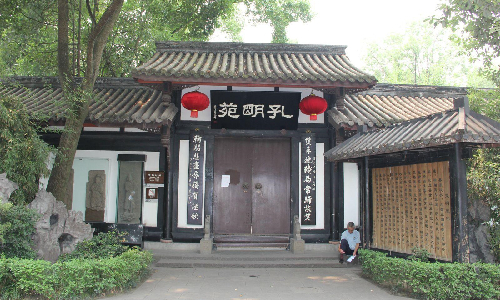
 Shanghai
Shanghai Today you will say goodbye to Chengdu. After breakfast, your guide will transfer you to the airport to take the estimated flight 9C6278 11:25/14:30 to Shanghai, a cosmopolis full of vitality and charm. After arrival, your guide will be waiting for you at the airport and then transfer you to the hotel. On the way to the hotel, your guide will briefly introduce Shanghai to you.
After breakfast, your guide will take you to the Yu Garden (closed every Monday). It once was a private garden during the Ming Dynasty but is now open to the public. It mainly comprises six scenic areas with different features. There are more than 40 ancient buildings as well as many rockeries, ponds, and winding corridors in the garden. Moreover, the garden boasts the Exquisite Jade Rock, one of the three most famous rocks in Jiangnan (south of the Yangtze River) region. The rock is porous and beautifully shaped, with a weight of 3 tons. Something interesting about the rock is that if you pour water on the rock from its top, the water will flow out from all holes, which is a spectacular scene.
Next, your guide will show you around the Jade Buddha Temple. It is named so because there are jade Buddha statues enshrined inside. It is a building complex with the architectural style of the Song Dynasty (960-1279) and mainly consists of the Hall of Heavenly Kings, the Grand Hall, and the Jade Buddha Chamber. The Jade Buddha Chamber houses a sitting Buddha statue which is carved out of a single piece of jade. The statue is 1.95 meters tall with a serene expression. It is exquisitely carved and decorated with hundreds of jewels, which appear to be glittering and translucent.
After lunch, you will visit the Shanghai Tower, which is a skyscraper with a total height of 632 meters. It has a spiral shape, and it looks like a guitar pick if viewed from above. The spiral shape can slow down the wind current, which makes the building stand the test of typhoons. You will take the ultra-high-speed elevator on the B2 floor to the observation deck "Top of Shanghai Observatory" on the 118th floor. The observation deck allows you to overlook Shanghai from a 360-degree view.
Then you will go to the Bund, which is an important landmark on the bank of the Huangpu River in Shanghai. Due to some historical reasons, the buildings along the Bund are featured in both Western and Oriental styles. The scene that buildings with characteristics of different countries coexist in one area is very imposing. The building with the longest history here was originally named Asia Building and was built in 1913. It is now home to the headquarters of China Pacific Insurance Company. Its lower and upper parts adopt Baroque design while the middle part presents a modernist style. It’s a good idea to walk along the Bund, appreciating the historical buildings and the enchanting scenery of the Huangpu River.
Lastly, your guide will take you to Nanjing Road, which is the earliest commercial street after the opening of Shanghai. As an important business center in Shanghai, Nanjing Road attracts many shoppers from home and abroad. It has a wide range of commodities, from luxury goods to inexpensive local specialties.
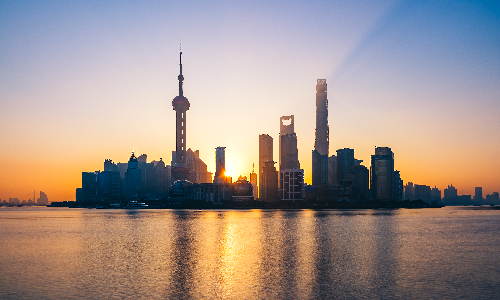

Today your 13-day journey in China will come to an end and it’s time to say goodbye. We hope you will enjoy yourself during this journey. You will be transferred to the airport according to your flight schedule. We will look forward to meeting you again!
Author: Wang Kun
Proofreader: Li Yiwen
| City | Five Star hotel list | Four Star hotel list |
|---|---|---|
| Beijing | Sunworld Dynasty Hotel Beijing Wangfujing | Sunworld Hotel Wangfujing |
| Xi'an | Tianyu Gloria Grand Hotel Xi'an | Sunworld Dynasty Hotel |
| Lhasa | Shangri-La Hotel, Lhasa | Thangka hotel |
| Chengdu | Sofitel Chengdu Taihe | Holiday Inn Express Chengdu Jinniu |
| Shanghai | Hua Ting Hotel And Towers | Ambassador Hotel |
 |
![]() About your child or infant, please contact us for a discounted price.
About your child or infant, please contact us for a discounted price.



We started with a few days in Beijing & ended in Shanghai, from where we visited the Forbidden City and Great Wall. In between we visited Terra Cotta Warriors Museum, Panda Base, Shanghai Disneyland.

We had a wonderful holiday in China which will remain long in the memory. China is a breathtakingly beautiful country full of splendid temples and palaces, mountains and rivers, peaceful rural scenes and bustling shopping streets.
 QUICK ENQUIRY
QUICK ENQUIRY